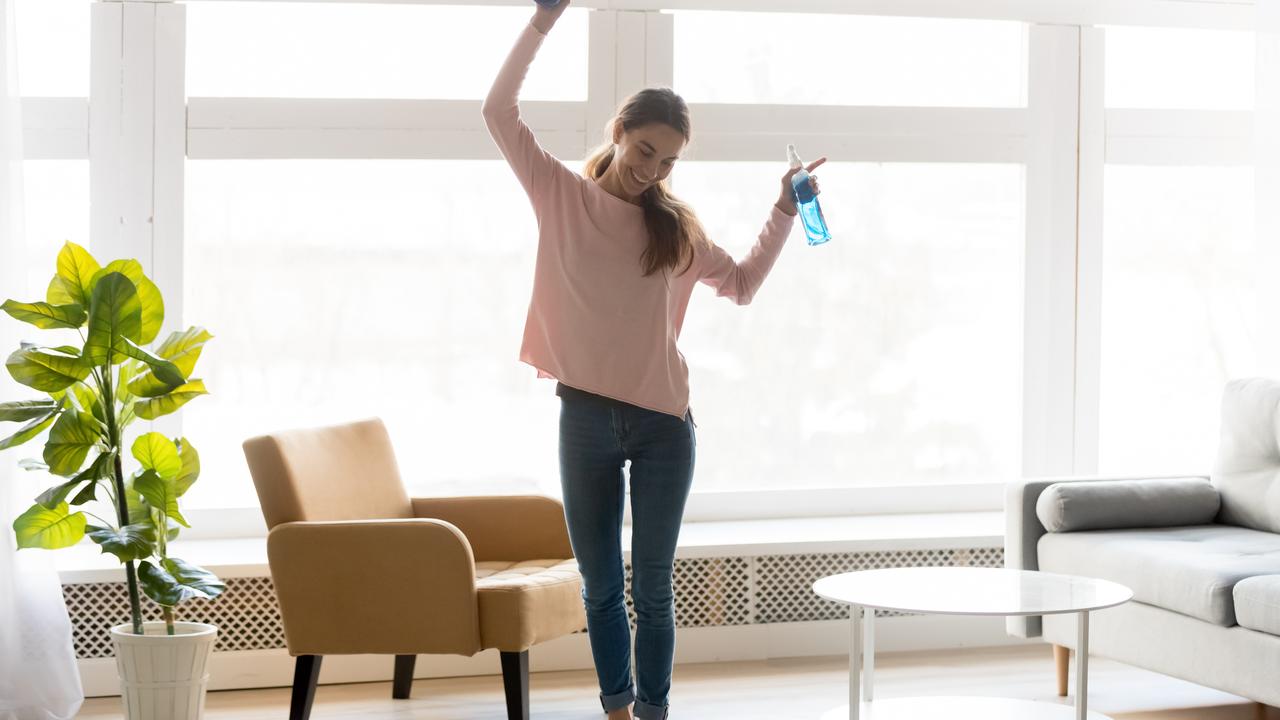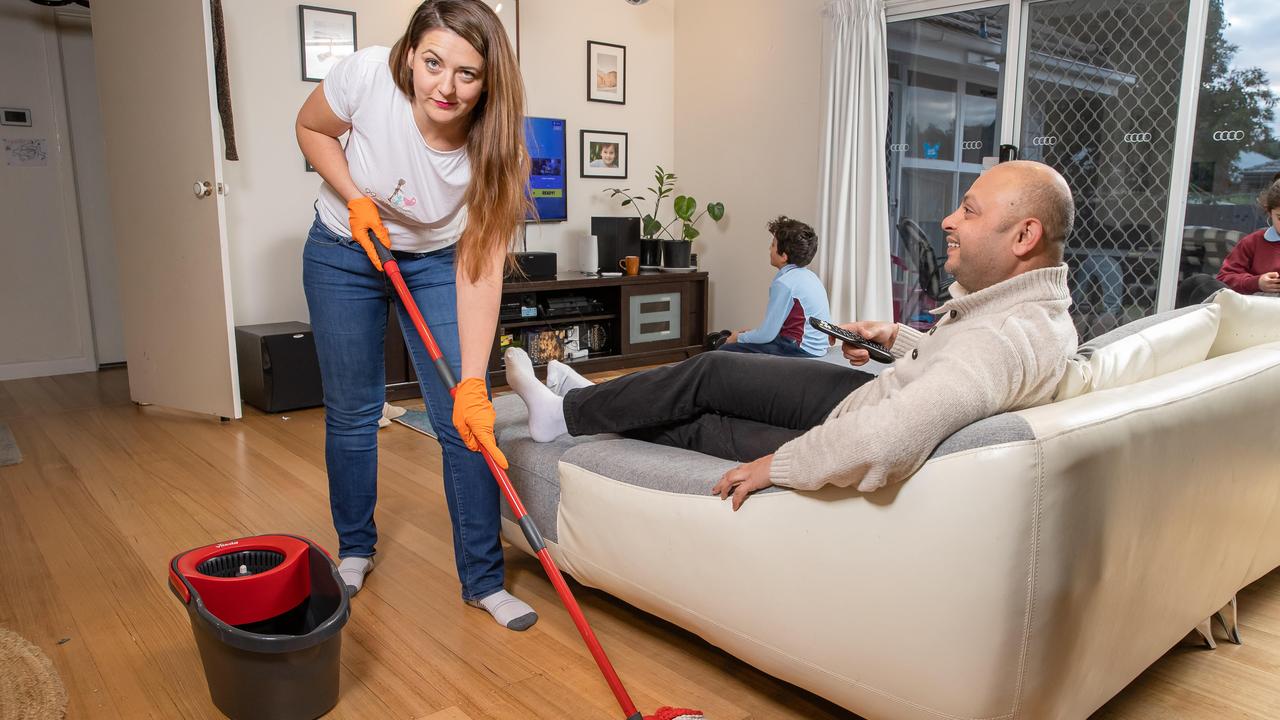How to build household chores into your workout routine to prevent cancer, dementia
It’s the ultimate way to kill two birds with one stone - stay fit, and help ward off serious disease, and clean your home at the same time.

Studies show regular exercise is key to reducing the risk of cancer and other debilitating diseases, but after a busy week juggling work and family commitments, it’s not always easy to find time to exercise and clean the house – so why not combine the two?
Studies have shown many household chores are great at getting your heart rate up, building muscle strength and increasing flexibility and balance.
And the best part is, it’s free.

AUSSIES SIT TOO MUCH
According to the government’s official health site, health.gov.au, more than half of Australian adults don’t do enough physical activity each week, with 44 per cent of working age Australians spending most of their work day sitting.
Our kids fare much worse. About 70 per cent of children aged 2 to 17 don’t get the recommended amount of weekly physical activity, with just 2 per cent of teenagers meeting the guidelines.
“Physical inactivity is responsible for more than 6 per cent of the cancer burden in Australia, second only to tobacco smoking,” the site states. “The diseases most closely linked to physical inactivity are diabetes, bowel cancer, uterine cancer, dementia, breast cancer, coronary heart disease and stroke.”
It’s time to get moving.

THE BENEFITS OF HOUSEWORK
MaidForYou operations manager Adriana Aziz knows the health benefits that come from household cleaning. She has seen the physical transformation of the company’s professional cleaners, with new hires taking six to eight months before they are strong and fit enough to keep up with their more senior colleagues.
“Just in general through cleaning, especially throughout spring and summer, our cleaners can burn on average 2500-3000 kilojoules in a regular 8-hour shift,” Ms Aziz says. “They’ll do well over 10,000 steps every single day.”
“The vast majority of our cleaners are physically fit. They generally have strong arms and strong backs, which helps with the constant back-and-forth scrubbing they do on a day-to-day basis.”

Founder of the Institute of Personal trainers Dan Salcumbe says the perks of incorporating housework into your regular workout routine go far beyond just the physical benefit of “improved cardiovascular fitness, increased muscle strength, and enhanced flexibility.”
“A cleaner and more organised living space can reduce stress and boost overall wellbeing,” he says. “Chores can also serve as a form of mindfulness, providing a break from digital screens and allowing you to focus on the task at hand. This can reduce anxiety and improve mental clarity.”
BEST CHORES FOR EXERCISE
Mr Salcumbe says it’s best to think of household chores as being supplementary to a dedicated exercise regimen in that cleaning your home each week isn’t enough exercise in and of itself.

“Some of the best types of chores for exercise include vacuuming, sweeping, mopping, gardening, and even tasks like washing windows or cleaning out the garage,” Mr Salcumbe says. “These activities engage multiple muscle groups and get your heart rate up.”
While it varies depending on a person’s weight and the intensity and duration of the chores done, a person could burn 100-300 calories per hour doing chores, he adds.
“For example, vacuuming for an hour can burn around 190 calories for a 150-pound (68kg) person,” he says.
Ms Aziz says vacuuming and mopping offer the most bang for buck when it comes to getting your heart rate up and building muscle.

“The push and pull motion of using a mop increases the heart rate and can be a mini-workout for the back, bicep and forearm muscles,” she says. “I’ve noticed the professional cleaners that have worked with our organisation over a long period of time, develop extremely strong wrists, forearms, and back muscles.”
TIPS FOR TURNING HOUSEWORK INTO A WORKOUT
You can commit to keeping a cleaner home and living a healthier lifestyle by mapping out a weekly plan. Mr Salcumbe suggests scheduling chore sessions (along with core sessions) as part of your daily or weekly routine.
“Use chores as a warm-up or cool-down activity before or after your regular workout,” he says.
Alternatively you could up the ante with your housework by adding speed or resistance, such as through brisk vacuuming or carrying heavy laundry baskets, he says.
“Try interval training by alternating between chores and short bursts of more traditional exercise like jumping jacks or push-ups,” he adds.

Ms Aziz says using music to set a fast pace can help, as can health tracking tech.
“Using a smartwatch to track both steps and heart rate is a foolproof way of making sure you’re monitoring how strenuous cleaning your home is,” she says.
To avoid injury, make sure you focus on “proper body mechanics” Mr Salcumbe says.
“Lift with your legs, not your back, and take breaks when needed,” he says. “Mix different chores to target various muscle groups and prevent monotony.”
He also suggests choosing chores that you find the most satisfying while looking to balance light and vigorous tasks.
More Coverage
Originally published as How to build household chores into your workout routine to prevent cancer, dementia




